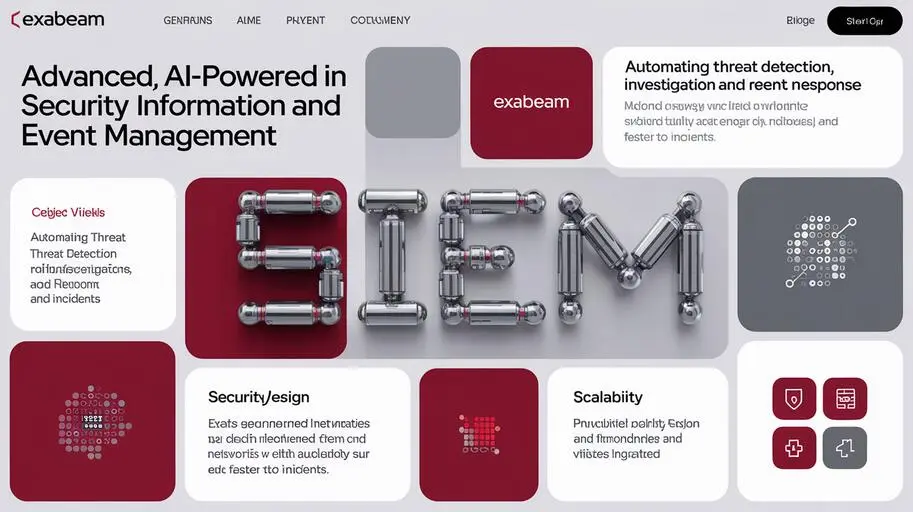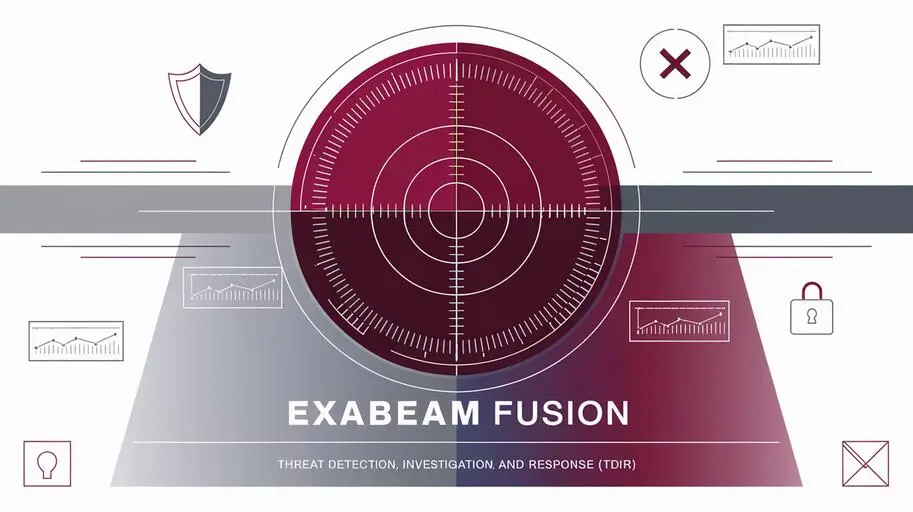
What is Social Engineering and Why It Matters
In the modern world, cybersecurity is primarily associated with technical protection measures: firewalls, antivirus software, complex encryption algorithms. However, often the weakest link in a security system turns out to be the human factor. This is where social engineering comes into play – a cunning approach by attackers who use psychological manipulation and deception to trick individuals into voluntarily providing access or sharing credentials, banking details, or other confidential information. It’s not about hacking computers; it’s about manipulating people.
Attackers employing social engineering do not look for vulnerabilities in program code; they seek weaknesses in human trust, habits, and emotions. This makes such attacks extremely dangerous, as even the most advanced technical measures are powerless if a user willingly hands over the keys.
How Social Engineering Works: Stages of an Attack
Social engineering attacks are rarely spontaneous. They are meticulously planned operations that typically unfold in several distinct stages, each critical to the attacker’s success:
Stage 1: Research and Reconnaissance
In the initial stage, the attacker conducts detailed reconnaissance (information gathering) about their potential victim or organization. The goal is to collect as much data as possible: from the company’s structure and employee roles to their personal interests, behavior, social media connections, and even individual “triggers” – emotional or professional weaknesses that can be exploited. Information sources can be public (company websites, LinkedIn, Facebook, Instagram profiles), or more specific (forums, news, press releases, even physical visits to locations). The more details gathered, the more convincing and personalized the subsequent manipulation will be.
Stage 2: Attack Scenario Planning
Having gathered the necessary information, the attacker develops a detailed attack scenario. They choose the most suitable method (discussed below) and create specific messages (email, SMS), phone calls, or even physical actions that will be used to exploit the identified weaknesses of the target individuals. For example, if the target is a finance department, a fake “invoice” from a known vendor might be created, demanding urgent payment.
Stage 3: Execution and Exploitation
At this stage, the attacker executes the attack. Most often, this involves sending a message (via email, messenger, SMS) or making a phone call. In some cases, such as phishing, the execution chain can be partially automated: the user clicks on a malicious link leading to a spoofed website or executes malicious code. In other, more complex attacks, attackers may actively interact with their victim, maintaining their “pretext” and building trust to achieve the desired outcome, such as extracting passwords or gaining system access.
The Most Common Social Engineering Methods: What You Need to Know
According to InfoSec Institute data and recent analytics, the following methods are among the most frequently used in social engineering attacks. Understanding these methods is the first step toward effective protection.
1. Phishing
Phishing is arguably the most prevalent type of social engineering attack. Its essence lies in using fake messages (typically emails, but also SMS, messenger messages, or social media posts) that impersonate legitimate sources. The goal is to obtain confidential information (passwords, card details) or to trick the victim into clicking a malicious link that leads to a spoofed website or downloading a malicious file. Phishing messages skillfully capture the victim’s attention and prompt action by creating a sense of urgency (“your account is locked!”), piquing curiosity (“you’ve won a prize!”), asking for help, or triggering other emotional responses (fear, greed). They expertly mimic logos, text styles, and sender addresses, impersonating well-known companies, banks, government agencies, or even colleagues. For instance, it could be a message about a “blocked” bank account or a “failed delivery” requiring immediate action. Statistically, phishing remains one of the leading causes of successful cyberattacks.
2. Watering Hole Attack
The “watering hole” method employs an indirect approach. Instead of directly attacking the victim, attackers first compromise a legitimate website that they know their target audience frequently visits. For example, if the target is IT company employees, hackers might breach a popular developer forum or a tech news website. The compromised site typically installs a Trojan backdoor or other malicious software on visitors’ devices, allowing the attacker to gain access and remotely control the victim’s machine. These attacks are often carried out by experienced hackers who may have discovered a zero-day exploit and use it very selectively to prolong its value.
3. Whaling Attack
A whaling attack is an extremely targeted and sophisticated type of phishing attack. It’s aimed at “big fish” – specific high-profile individuals (company executives, CFOs, top managers, network administrators) who have privileged access to critical systems or highly valuable confidential information. Whaling attacks require extensive research and meticulous preparation, as attackers craft exceptionally personalized and convincing messages that mimic critical business communications. These emails often “pretend” to be sent from a colleague, an employee, or even an external auditor, demanding urgent intervention from the victim in a seemingly legitimate but extremely important matter.
4. Pretexting
In “pretexting” attacks, the attacker creates a detailed, plausible fake identity or scenario (the “pretext”) and uses it to manipulate their victims into providing personal or confidential information. For example, attackers might impersonate an IT support employee calling to “help resolve a computer problem” and ask for passwords or to install remote access software. Or they might pretend to be a representative of the victim’s financial institution, requesting bank account confirmation or credentials under the guise of a “security check.” The key here is the creation of a convincing, pre-planned story that builds trust and prompts the victim to take specific actions.
5. Baiting and Quid Pro Quo Attacks
These two methods are often discussed together due to their similarity in using a “promise” or “gift”:
- Baiting: Attackers offer something that victims perceive as valuable or useful, as “bait.” This could be a supposed software update that is actually a malicious file, an infected USB drive with an enticing label (“Salary Records 2024,” “Confidential Project Data”) left in a parking lot or public place, or a free application/game that conceals malware. The goal is to entice the victim to activate the malicious content, lured by the “free lunch.”
- Quid Pro Quo: This method is similar to baiting, but instead of a tangible “promise,” attackers promise to perform an action that will benefit the victim, but requires an action in return. For example, an attacker might randomly call internal company numbers, pretending to be calling back after a tech support request. When they reach someone who actually has a technical problem, they pretend to offer assistance but instruct the victim to perform actions that compromise their machine or data (e.g., install a “patch” or enter credentials into a “dialog box”).
Other Important Types of Social Engineering Attacks
Beyond these five, there are other, equally dangerous methods that are worth knowing about:
- Vishing: Voice phishing. This is essentially phishing carried out via phone calls to victims. Attackers may impersonate bank representatives, police, tech support, or other authoritative entities, attempting to extract confidential information or coerce specific actions.
- Scareware: Displays fake messages on a user’s device about an alleged threat (virus, malware). The goal is to panic the user into installing “antivirus” software that is actually the attacker’s malware, or to pay for its “removal.”
- Redirection Theft: An attacker intercepts or redirects a courier/delivery person to the wrong location, or takes their place to intercept a confidential package, document, or equipment intended for someone else.
- Honeytrap (Honey Pot / Catfishing): An attacker creates a fake online profile (e.g., on social media or dating sites) and pretends to be an attractive individual. The goal is to establish a trusting relationship and then extract confidential information, compromising photos, or financial data from their victim.
- Tailgating / Piggybacking: This is a physical method where an attacker gains entry to a secured facility (office, server room, warehouse) by following someone who has authorized access. They simply ask to “hold the door” or “walk in together,” bypassing security checks.
How to Protect Yourself: A Comprehensive Approach to Cybersecurity
Completely avoiding encounters with social engineering in the modern world is almost impossible, as it constantly evolves and targets human nature. However, risks can be significantly reduced for yourself and your organization by adopting a comprehensive cybersecurity approach that combines technology and awareness.
1. Regular Employee Security Awareness Training
The human factor is paramount. Regular and interactive security awareness training for employees is the first and most effective line of defense. Employees may simply be unaware of the sophistication and dangers of social engineering, or may forget details over time. Conducting regular training sessions, workshops, and continuously updating information on new threats, as well as running practical simulations (e.g., controlled phishing campaigns to identify vulnerable employees), will help build “immunity” to such manipulations. It’s crucial to foster a corporate culture where every employee understands their role and responsibility in ensuring data security.
2. Modern Antivirus Software and Endpoint Protection Tools
Even if a social engineering attack is psychologically successful, its technical consequences can be mitigated. A fundamental technical measure is the installation of robust antivirus protection and other endpoint security tools (Endpoint Detection and Response, EDR) on all user devices. Modern security solutions, such as platforms from our trusted partners, are capable of detecting and blocking explicit phishing messages, as well as any links to malicious websites or IP addresses listed in up-to-date threat intelligence databases. They can also intercept and block malicious processes running on a user’s device, even if the initial manipulation was successful. For example, Cynet offers a comprehensive XDR platform that combines EDR, Network Detection and Response (NDR), User and Entity Behavior Analytics (UEBA), and Security Orchestration, Automation, and Response (SOAR) capabilities, providing multi-layered protection.
3. Penetration Testing and Attack Simulations
To identify non-obvious weaknesses, ethical hacking services and penetration testing (pentests) are invaluable. This allows you to identify potential vulnerabilities in your organization before cybercriminals do. A penetration test simulating a compromise of sensitive systems specifically through social engineering will help you identify the most vulnerable employees, assess the effectiveness of internal policies and procedures, and pinpoint specific social engineering methods your company might be particularly susceptible to. This is also an excellent way to evaluate the effectiveness of conducted security awareness training.
4. SIEM and UEBA Systems: Intelligent Behavioral Monitoring
Despite all preventive measures, social engineering attacks, unfortunately, are inevitable. Therefore, it is crucial to have tools that allow for rapid collection of security incident data, detection of suspicious events occurring across the network and on endpoints, and immediate notification of security personnel to take action. This is where SIEM (Security Information and Event Management) and UEBA (User and Entity Behavior Analytics) systems become indispensable.
For example, Exabeam Security Management Platform is a next-generation security information and event management system (New-Scale SIEM™) powered by robust User and Entity Behavior Analytics (UEBA). Exabeam collects security events and logs from across your organization, uses machine learning algorithms to establish “normal” user behavior, and alerts you to any anomalous or suspicious activities. Whether it’s a user accessing an unusual web address, anomalous access to confidential files, or a malicious process running on a device, UEBA helps you identify social engineering attacks early and respond quickly. This includes automated incident response playbooks, minimizing potential negative consequences. Another one of our partners, Tufin, specializes in automating network security policies, complementing the capabilities of SIEM and UEBA in protecting against such attacks by ensuring network changes do not create new vulnerabilities.
NWU: Your Partner in Protection Against Social Engineering
NWU is your reliable partner in the world of cybersecurity. We understand that effective protection against social engineering requires not only the use of advanced technologies but also a deep understanding of the human factor and continuous updating of defense strategies. That is why we offer comprehensive solutions that combine leading platforms and the extensive experience of our experts.
We are the official distributor of Exabeam, Cynet, and Tufin in Ukraine, which guarantees you access to the most modern cybersecurity solutions. We will help you not only to purchase Exabeam in Ukraine but also to receive comprehensive consultation on integrating these and other systems into your existing security infrastructure. Our team will provide professional setup, employee training, and ongoing technical support, ensuring that your security investments yield maximum returns.
Conclusion: Your Security – Our Priority
Social engineering remains one of the most insidious and effective threats in cyberspace, constantly evolving. It demands vigilance from organizations and a comprehensive approach to protection, combining technical measures, personnel training, and proactive monitoring. By combining employee awareness, reliable antivirus solutions, modern SIEM/UEBA systems like Exabeam, and expert support from NWU, you significantly enhance your ability to counter these cunning attacks. Don’t wait for your company to become a victim – act today to build a robust and multi-layered defense that addresses all aspects of modern cybersecurity.
What is social engineering in cybersecurity?
Social engineering is a manipulation technique that exploits human behavior and emotions to trick individuals into revealing confidential information, granting access, or taking harmful actions. Unlike technical hacking, it targets people rather than systems.
Why is social engineering so effective?
Because it leverages human trust, urgency, fear, or curiosity, social engineering can bypass technical security systems. Attackers often pose as trusted contacts or use psychological tricks to manipulate victims into taking unsafe actions.
What are the most common types of social engineering attacks?
Top methods include phishing, spear phishing, baiting, pretexting, and vishing. These tactics are used to trick users into revealing passwords, clicking malicious links, or giving unauthorized access to systems or data.
How does phishing differ from spear phishing?
Phishing is a broad, mass-targeted attack that sends fake messages to many recipients. Spear phishing, on the other hand, is a highly targeted attack aimed at a specific person or organization, often using personalized information to increase credibility.
Can social engineering lead to serious security breaches?
Yes. Many major cyberattacks begin with a social engineering tactic. Once attackers gain initial access or credentials, they can escalate privileges, spread malware, or steal sensitive data.
How can I protect my employees from social engineering?
Train your staff regularly, simulate phishing attacks, encourage reporting of suspicious activity, and promote a security-aware culture. Human vigilance is key to preventing these threats.
Are antivirus or firewalls effective against social engineering?
Traditional security tools can't fully block social engineering because it relies on human action. However, solutions like endpoint protection, SOAR, or UEBA can detect and respond to anomalies triggered by such attacks.
What should I do if I fall victim to a social engineering attack?
Immediately report the incident to your IT or security team, change compromised passwords, and monitor systems for unusual activity. Quick reaction can prevent larger damage.
Is social engineering used only by cybercriminals?
Not exclusively. It is also used in ethical hacking and penetration testing to assess security awareness and resilience, helping organizations improve their defenses.
Can children or seniors become targets of social engineering?
Yes, attackers often exploit the vulnerability or lack of technical awareness among children and older adults through scams, fake calls, or phishing emails. Awareness and education are critical.
What role does cybersecurity training play in prevention?
Cybersecurity awareness training helps employees identify red flags, resist manipulation, and respond appropriately. It’s a core component of organizational defense strategies.
What modern tools can enhance protection against social engineering?
Advanced platforms like Cynet (XDR, MDR), Tufin (policy management), and Exabeam (UEBA/SIEM) offer behavior analysis, automated response, and context-aware threat detection to reduce social engineering risks.











